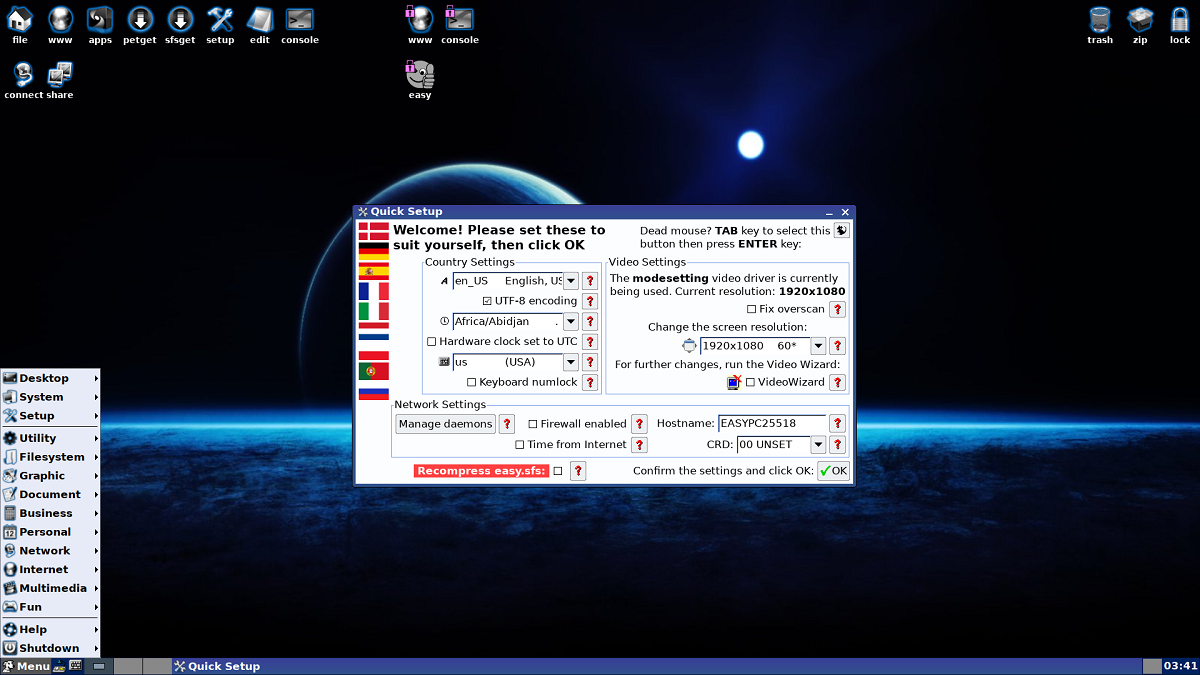
Recently Barry Kaller, founder of the Puppy Linux project, unveiled the release of the new version of experimental Linux distribution EasyOS 3.2 trying to combine Puppy Linux technologies using container isolation to run system components.
Each application, as well as the desktop itself, can be launched in separate containers, which are isolated using their own Easy Containers mechanism. The distribution package is managed through a set of graphical configurators developed by the project.
About Easy OS
Of the most important features of EasyOS that stand out, we can find, for example, the default operation with root privileges with privilege restoration at the start of each application, since EasyOS positions itself as a one-user live system (optionally, it is possible to work under the privileged 'spot' user).
As such the distribution installs in a separate subdirectory (system is located in /releases/easy-3.2, user data is stored in /home directory and additional containers with applications in /containers directory) and can coexist with other data on the drive.
Besides it individual subdirectories can be encrypted (eg /home) and install SFS metapackages, which are Squashfs mount images that combine several regular packages.
After installation, the system is updated in atomic mode (the new version is copied to another directory and the active directory is changed with the system) and supports rollback of changes in case of problems after upgrade. There is a boot from RAM mode, in which, at startup, the system is copied into memory and works without accessing the disks.
For the desktop part, this it is based on the JWM window manager and the ROX file manager.
The basic package includes applications such as:
- SeaMonkey (the Internet menu also contains a button for Quick Install Firefox)
- LibreOffice
- Scribus
- Inkscape
- GIMP
- mtPaint
- Day
- gpicview
- Geany text editor
- Fagaros password manager
- The HomeBank Personal Finance Management System
- The Personal DidiWiki Wiki
- The Osmo Organizer
- The project manager planner
- The note case system
- pigin
- Audacious music player and also along with other Celluloid, VLC and MPV media players
- The Live Video Editor
- The OBS Studio broadcast system.
- For easy file and printer sharing, your own EasyShare app is available.
What's new in EasyOS 3.2?
The new version of EasyOS 3.2 stands out for offering significant structural changes, for example each application can now be launched as a separate, non-privileged user.
It is also highlighted that added a new root directory/files and that an OpenEmbedded (OE) based environment is also used to rebuild packages and the audio subsystem has been translated from ALSA to Pulseaudio.
On the other hand, it is highlighted that they added new video drivers and included video editor LiVES, VLC media player, OBS Studio streaming system, and Scribus publishing package.
The 'devx' metapackage includes the Mercurial version control system and the Nemiver debugger.
Since version 3.1, EasyOS has undergone major structural changes and many new applications have been added. Some of the structural changes include a switch from ALSA to Pulseaudio only, applications running as their own user, improved hardware profiling for audio, fixes for samba, audio and video, more video drivers.
Software changes include a recompilation of all packages into OpenEmbedded (OE) and the addition of major multimedia applications such as the LiVES video editor, VLC video player, OBS Studio video recorder/streamer, and OBS Studio video editor. Scribus desktop, all cross-compiled in OE.
If you are interested in knowing more about this new release, you can consult the details In the following link.
Get EasyOS 3.2
For those who are interested in being able to try this Linux distribution, they should know that the size of the boot image is 580 MB and that they can obtain it from its official website. The link is this.